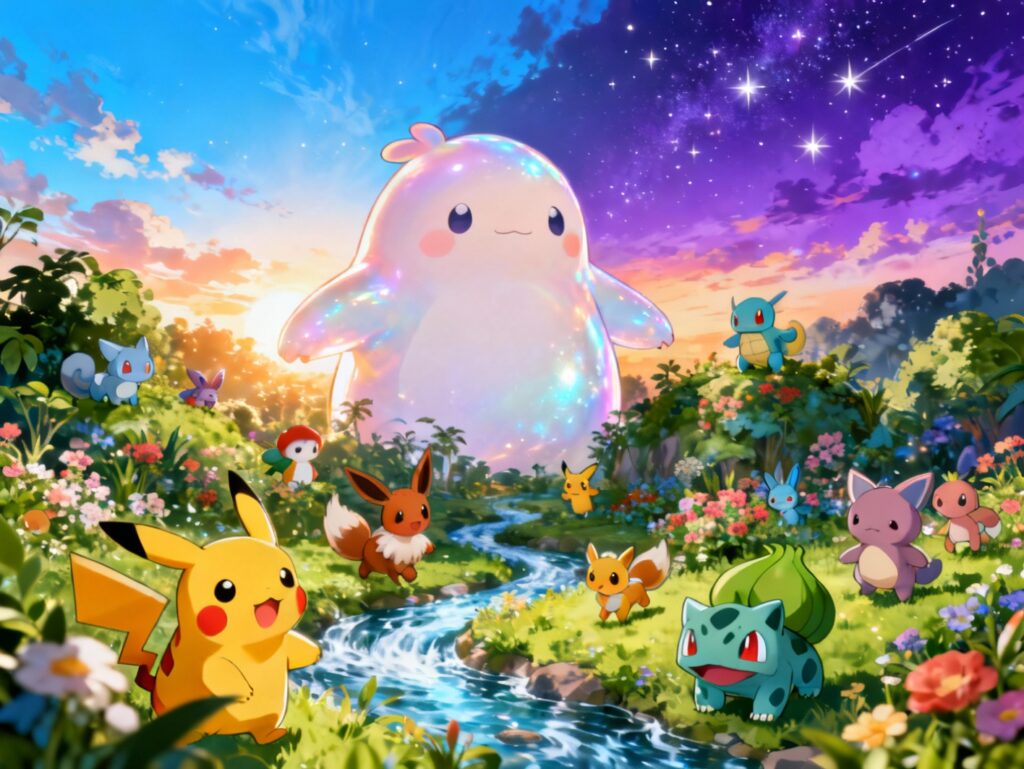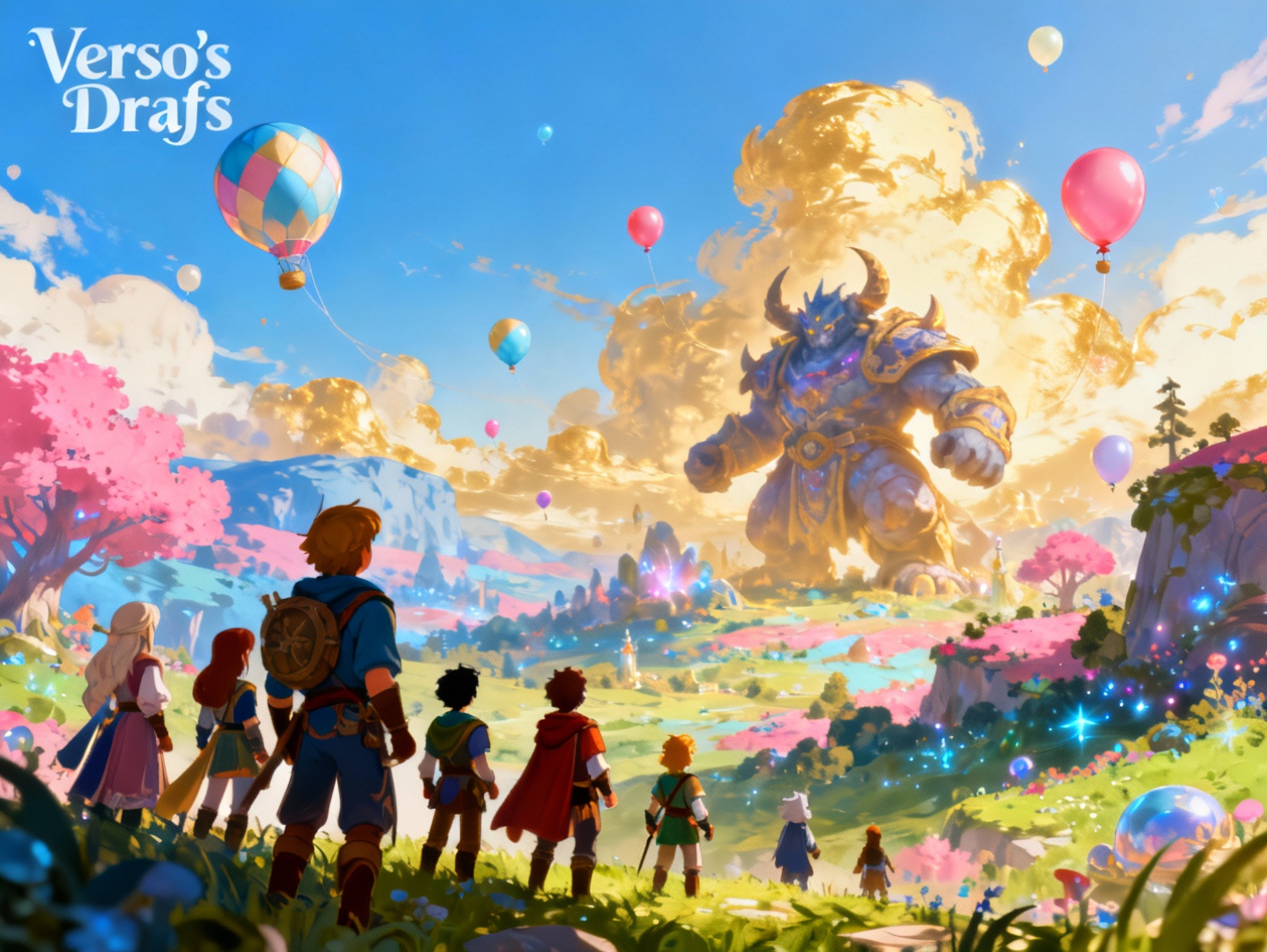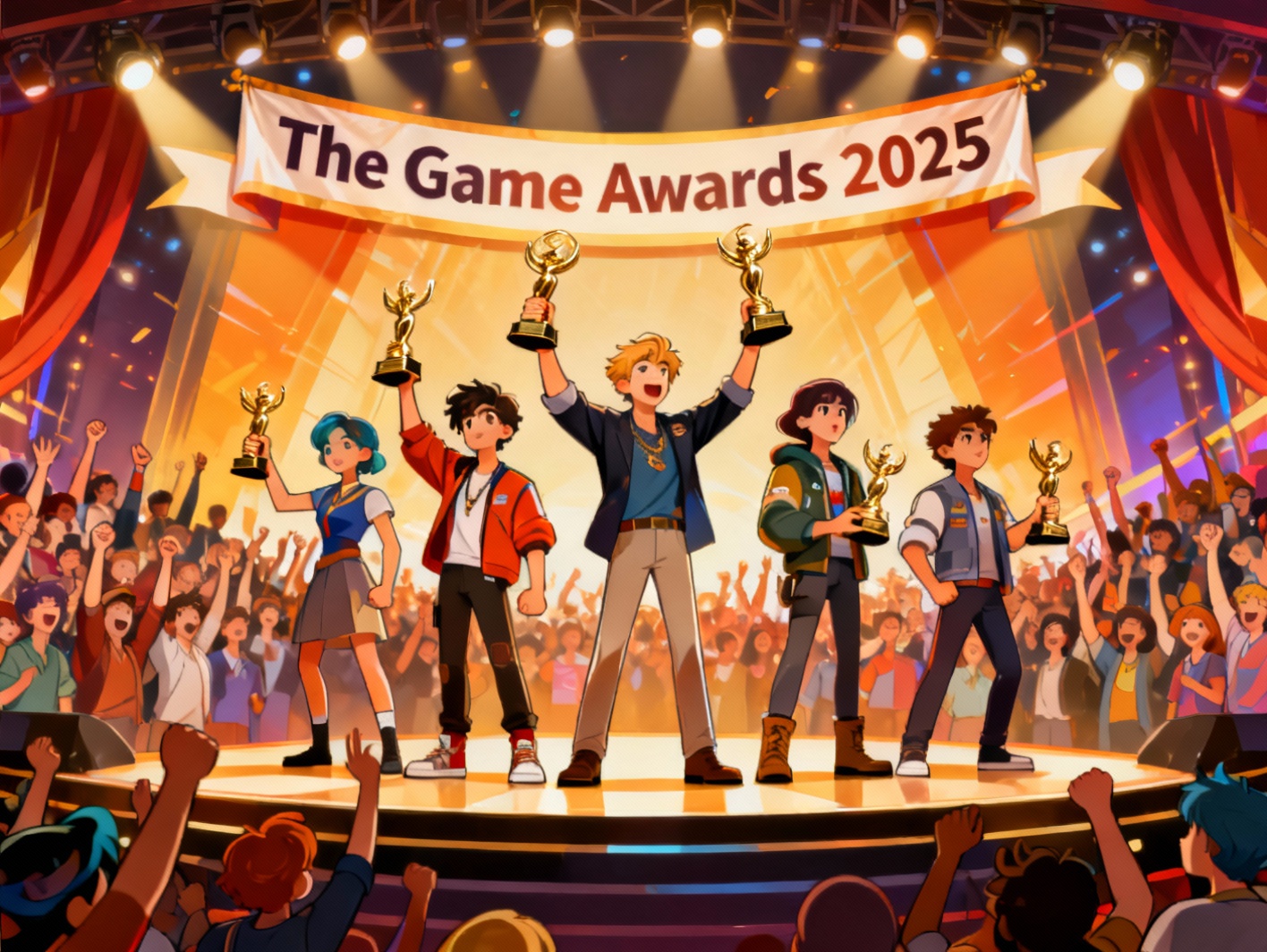
Table of Contents
Pokémon Pokopia is set to redefine the life simulation genre with a fresh concept coming from a collaboration between Game Freak and Koei Tecmo’s Omega Force. Scheduled for launch exclusively on the Nintendo Switch 2 on March 5, 2026, this game places players in the role of a Ditto that has taken on a human form. The mission is both creative and emotional—transforming a barren land into a nurturing habitat for Pokémon, using befriended Pokémon’s abilities and dedication. Unlike anything seen before in the franchise, this imaginative gameplay delves deeply into resource collection, building mechanics, and relationship development in a way that tightly integrates the characteristics and skills of various Pokémon. Pokémon Pokopia offers the potential to become the most immersive entry in the Pokémon series yet, combining rich environments, unique monsters, and an evolving world tightly tied to the player’s actions.
Innovative Gameplay Mechanics
In Pokémon Pokopia, players are placed into a beautifully dynamic world as a Ditto who has morphed into a human. The gameplay revolves around collecting resources, building habitats and pathways, and using the unique abilities of Pokémon friends to shape the land meaningfully. Rather than simply catching Pokémon, players must earn their trust by helping them or bonding through shared goals.
What’s unique here is how different species of Pokémon offer mechanical benefits based on their innate abilities. A Water-type like Squirtle can help hydrate farmland, while a Rock-type like Onix might assist with breaking boulders or constructing foundations. These mechanics breathe new life into the genre by making building and simulating life reliant on actual Pokémon interactions rather than abstract tools.
This integration of Pokémon abilities into everyday tasks transforms traditional sandbox gameplay. It breaks the wall between character interaction and the world around them. Players feel connected not just to their Pokémon companions, but also to the evolving landscape they’ve jointly shaped. Instead of battling being the core interaction, nurturing and creativity become the foundation of success, offering an inspiring alternative approach to life simulation within the Pokémon universe.
Exploring the Game’s Setting and Biomes
The world of Pokémon Pokopia is vast and segmented into a variety of richly diverse biomes, ranging from sun-scorched deserts to lush forests and serene coastal zones. Each biome houses its own unique assortment of Pokémon species and environmental materials essential for progression. These regions aren’t static—they shift subtly depending on the in-game weather and the real-world time synced with the Nintendo Switch 2’s internal clock.
Day and night cycles aren’t merely cosmetic. Many Pokémon only appear during specific times, and some resources become more common at dusk or during early morning. For example, Fire-type Pokémon like Houndour may roam primarily at night, while Grass-types become more active at dawn. This clever use of real-world time makes every play session distinct and invites recurring exploration.
The changing environments also influence building strategies. Certain areas may be prone to storms or droughts, requiring more resilient structures or Pokémon with specific abilities to manage them. This continuous layer of challenge and adaptation keeps the gameplay exciting. It mirrors natural ecosystems, encouraging players not only to explore but also to collaborate with local Pokémon in building a sustainable habitat.
Introducing New and Classic Pokémon
One of the most striking features of Pokémon Pokopia is the introduction of brand-new Pokémon designs that blend seamlessly with fan favorites. Palidachu, a regional variant of Pikachu, boasts pale, pastel fur and a new affinity for Fairy-type moves, offering utility in revitalizing magical plant life. Musgorlax, a moss-covered cousin of Snorlax, emits spores that speed up crop growth and forest regrowth, making it invaluable for rewilding efforts. Maestro Smeargle, a refined evolution of Smeargle, creates living artwork that can temporarily animate environmental features like bridges or signs.
These new creatures don’t just look different—they come packed with environment-shaping abilities that deepen gameplay. Meanwhile, classic Pokémon like Bulbasaur and Charmander maintain their nostalgic moves and personalities but now interact with the player in fresh ways. A Charmander, for example, might become a constant companion in hot climates, offering fire to cook food or repel Ice-types, while Bulbasaur can cultivate flora in garden zones.
The interaction system respects each Pokémon’s lore while allowing players to explore new relationships. Long-time fans will appreciate the subtle references and behavior traits, while newcomers can experience these creatures in a more personal and immersive context.
Multiplayer and Social Features
Multiplayer functionality in Pokémon Pokopia adds a vital social layer that extends beyond personal creativity. Players can invite friends to visit their developed Pokopia towns, allowing them to explore unique biome builds, trade resources, or interact with guest Pokémon. The connection isn’t limited to just viewing—collaborative events like habitat restoration, communal gardens, or festivals give players meaningful reasons to share gameplay experiences in real time.
There’s also the possibility of hosting Pokémon from other players, who arrive carrying gifts or messages. These visiting Pokémon bring temporary abilities and sometimes even share moves. It encourages strategic collaborations: one player’s environment may benefit immensely from another’s rare Water or Electric-type visitor, creating practical incentives for networking.
Friendships formed with other players and their Pokémon are persistent. Over time, shared accomplishments unlock new cosmetic items, combined habitats, or even evolving fusion projects that require two players to complete. This social gameplay feels intentional, designed not just to allow visits but to build community within a deeper narrative of rebuilding the Pokopia world.
- Real-time co-op structures
- Resource exchange systems
- Shared community goals and rankings
All of these systems make multiplayer an integral feature that expands replayability and emotional engagement.
Game-Key Card Distribution and Its Implications
With Pokémon Pokopia, Nintendo introduces the Game-Key Card—a new, tamper-proof distribution method that could redefine ownership in the digital age. Unlike traditional cartridges or digital downloads, the Game-Key Card uses encrypted, customizable storage tokens that store save files, updates, and user preferences.
This method aligns with efforts to combat game data corruption while also preserving long-term ownership. One of the challenges in modern gaming is digital preservation. As servers shut down or eShop platforms evolve, many fear losing access to beloved games. The Game-Key provides a tangible backup, maintaining full access to current and future updates for Pokopia directly through hardware.
Furthermore, trading Game-Keys could create a hybrid collector’s market, where content ownership includes special Pokémon, exclusive buildings, or environmental unlocks engraved into the card’s memory. However, its proprietary nature raises concerns about modding and access for lower-income players, potentially limiting second-hand game sharing.
Still, this bold move signals a new era of secure, long-lasting game ownership. If successful, it could influence Nintendo’s broader strategy—and potentially inspire similar models across the industry seeking balance between digital convenience and physical security.
Anticipation and Market Impact
The build-up to Pokémon Pokopia’s release has stirred excitement among both simulation game enthusiasts and long-time Pokémon fans. This hybrid game offers more than just another Pokémon spin-off—it combines creative construction, ecological strategy, and beloved creature interaction into one comprehensive experience.
Market reactions indicate that Pokopia could fill a niche previously dominated by titles like Animal Crossing and Stardew Valley, but with the emotional depth and branding power of Pokémon. Unlike traditional Pokémon titles focused on leveling and battles, Pokopia emphasizes empathy, ecosystem balance, and collaborative creation. This shift could signal a broader design philosophy for the Pokémon franchise, where diverse genres take root.
The anticipated success of Pokopia might influence future entries in the franchise to continue experimenting beyond battles and gyms. If players embrace this proactive, world-shaping gameplay, developers might be encouraged to build titles around storytelling, shared community goals, or environmental renewal. It also bolsters interest in spin-offs by proving they can deepen rather than dilute the core series ethos.
With strong pre-release visibility and positive reception to early demos, Pokémon Pokopia has the momentum to become a new pillar within the Pokémon ecosystem.
Conclusions
Pokémon Pokopia introduces a refreshing and imaginative twist to both the life simulation and Pokémon gaming genres. By blending intricate world-building mechanics with the familiar charm of partner Pokémon, it creates a space where creativity, strategy, and companionship thrive together. The inclusion of real-time environments, socially driven gameplay, and innovative hardware distribution further strengthen its position as a potential game-changer.
Fans and newcomers alike have much to look forward to, not only in the engaging mechanics but in the way Pokopia redefines what it means to live alongside Pokémon. With its March 2026 release approaching, the game is poised to leave a lasting impression on both gameplay expectations and the evolution of the Pokémon franchise. Its success may well shape the direction of future titles, ensuring that the world of Pokémon continues to grow in surprising, meaningful ways.










